
The specialty of his work is his paintings are in form of series like epics in literature. Example would be like a birth of a baby, his growing up phase, his entire life and death. This appears to the viewer like he is watching a picture in motion. For example, his 'river series' is one of the best examples how nature works. How a river is born, her youth, challenges faced and ultimately gets merged into ocean. Even for a person who has never seen origin and merging of river in ocean, he will be able to visualize and experience the life of a real river through his paintings. The various series are namely ‘marriage’, ‘indian life’, ‘river of life’, ‘phases of life’, ‘man’, ‘ramcharit’, ‘arjun as ideal man’ and ‘gandhi’. Each of these series consists of a number of paintings.
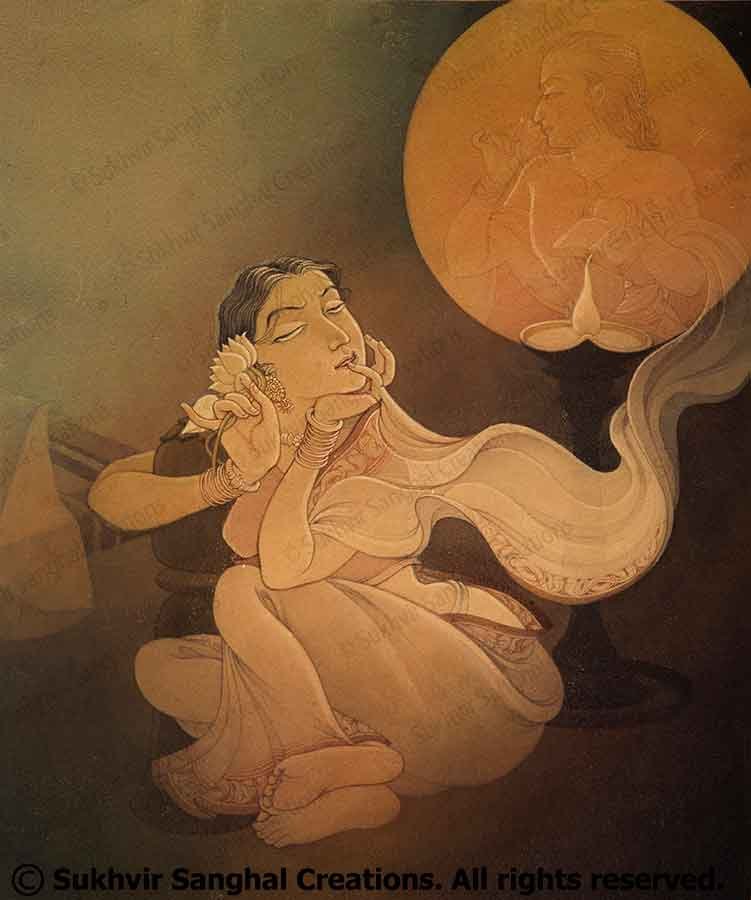






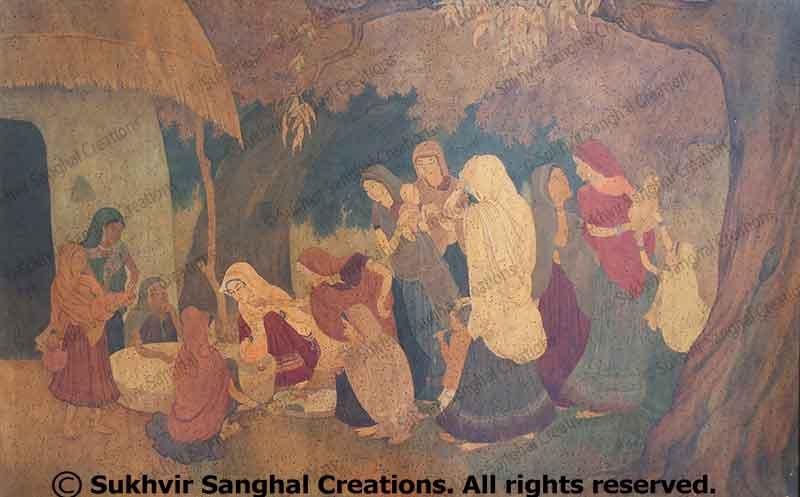
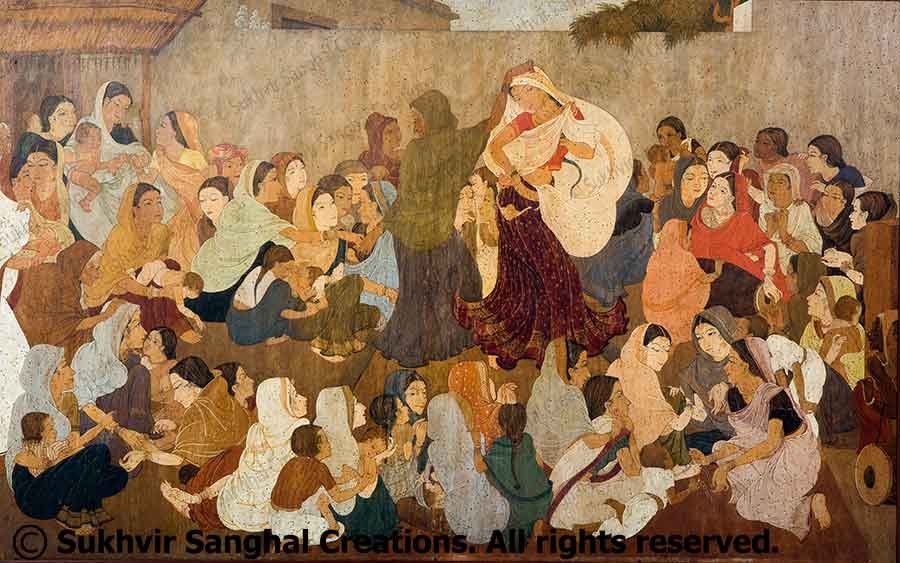
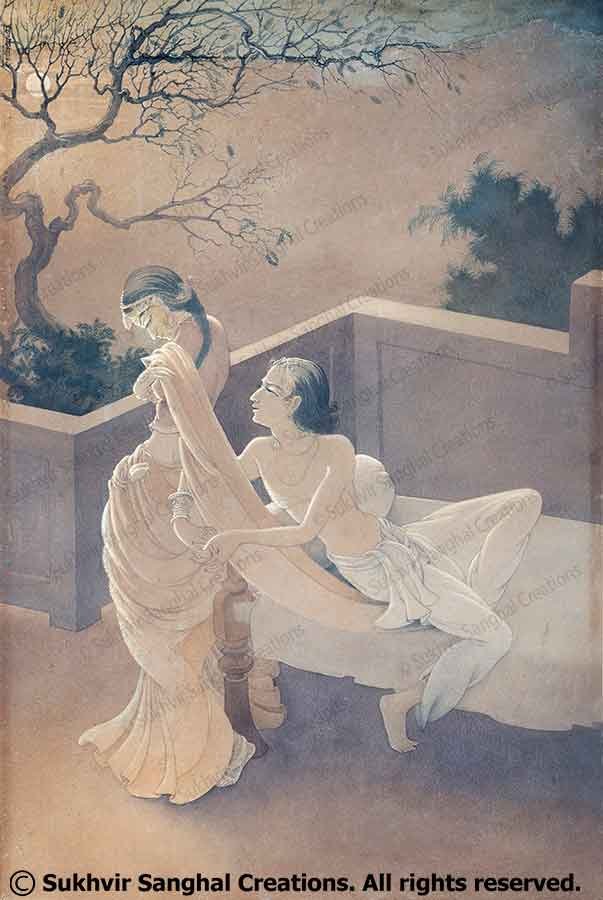
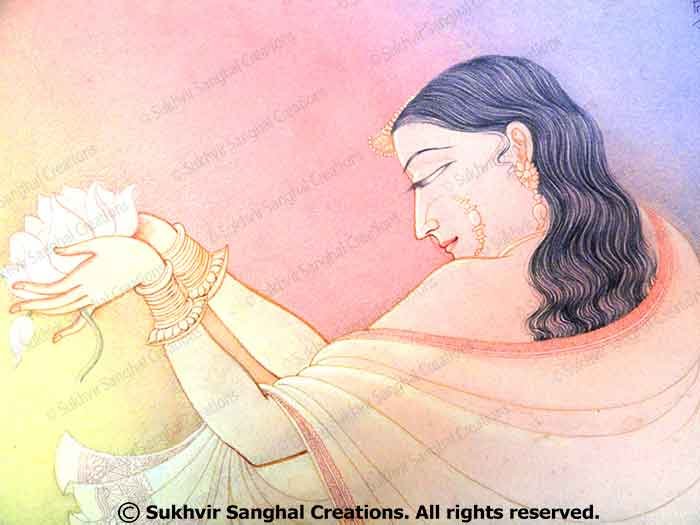
Wash technique is a special water colour technique. Prof. Sukhvir Sanghal ‘master of wash technique’ evolved and developed his own wash technique. Prof. Sanghal explains in his book ‘Bhartiya Chitrakala Paddhati’, the process of his wash technique. First of all, a color mixture is applied to paper to remove any impurity and set the basic tone of the painting. After that thin layers of required water colors are applied to the painting. The painting is then dipped in water for 20 to 30 mins. As per Prof. Sanghal’s book, dipping the painting in water makes the colors permanent. When the painting stops shining, layers of water colors are applied to get the desired tone along with completing the other details. After this again the painting is dipped in water for 20 to 30 mins and any minute details are corrected with the help of brush. Prof. Sukhvir Sanghal has his unique wash technique where at a later stage in the process of making painting, white color is mixed in the required colors and wash is applied in the painting.
After applying wash is completed, from the details explained in his book highlighting is done. Highlighting is done in the required direction and place with the help of different tools. With the help of this technique the environmental effects of wash are maintained and it’s like the life enters in the painting. He says, “it is this light that sometimes infuses a stone with life”
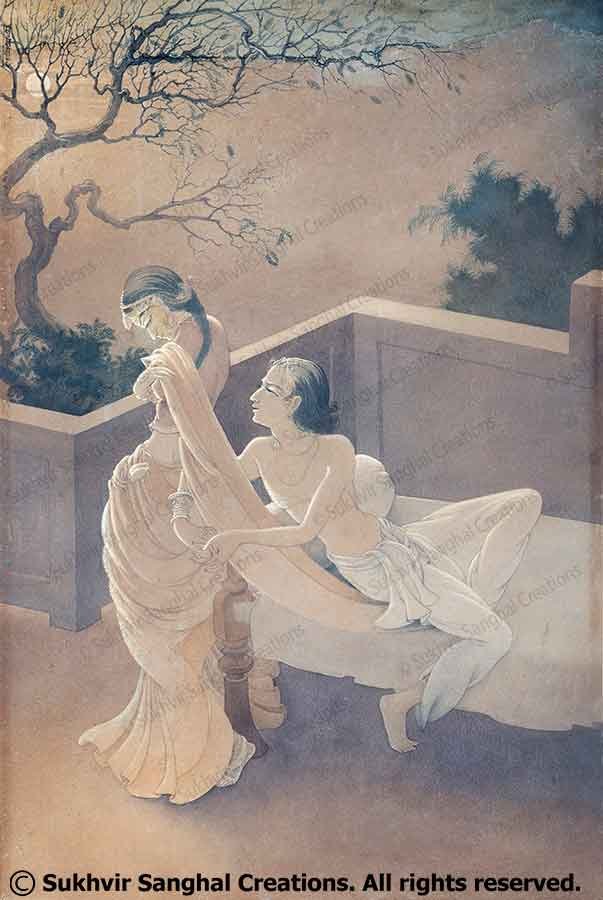
Prof. Sukhvir Sanghal mentions in book ‘Bhartiya Chitrakala Paddhati’ his original wash technique and says that paintings made by this technique are long lasting and filled with’rasa’ (emotional flavours). As explained in his wash technique that painting is dipped several times in water and due to this any of the unwanted element like mud gets removed and what remains is the pure color on paper. And hence, color becomes an integral part of paper. He also explains - in reality it is the unwanted element like mud which damages and fades the painting over a period of time. On the other hand, pure color provides strength to the paper. Oil colors are filled with foreign elements in excess and hence it is natual for oil color paintings to rip off over a period of time.
Rasa is a Sanskrit word which literally means juice, essence or taste. In terms of painting, it denotes its aesthetics which invokes a particular emotion in the art lover. As per the Indian rasa theory, there are nine rasas - shringara (love), hasya (laughter), karuna (sorrow), raudra (anger), veera (courage), bhayanaka (fear), bibhatsya (disgust), adbutha (wonder) and shantha (peace). In the worldly life, humans experience these emotions according to the situations. Prof. Sukhvir Sanghal Indianized the Chinese and Japanese wash technique of painting on the basis of Indian Rasa theory. For the first time he expressed the nine rasas through symbolic colors. He propounded original psychological causes for the origin of ‘rasas’ which were different from Bharatmuni’s explanation of Rasas.
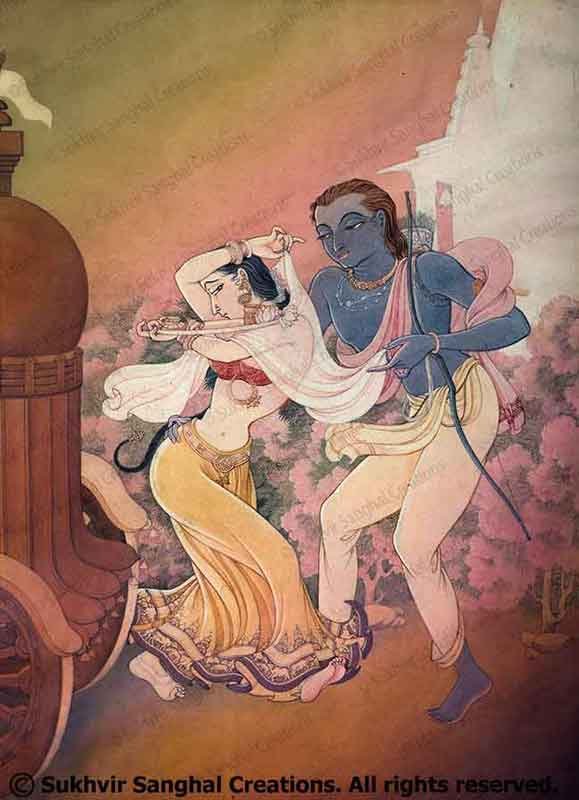

Prof. Sukhvir Sanghal’s paintings are master examples of best compositions. Composition is basically an arrangement of visual elements in the piece of art work. If someone tries to remove a portion from his painting, the meaning of the painting will alter leaving it incomplete. As the verses of Ramayan, on removing a single word, the verse is rendered meaningless and incomplete. He explains the composition techniques in his book ‘Bhartiya Chitrakala Paddhati’. Principles of composition are also explained in detail in his book ‘Evolution of Art and Artist’.
Prof. Sanghal has developed six principles of Art – Sadangas(six limbs) for creating ‘Rasas’ (emotional flavors). All these contributions are the result of his firm faith in a super-abstract God whose existence he easily and successfully proved in the history of philosophy by means of the venetian theory of colors.

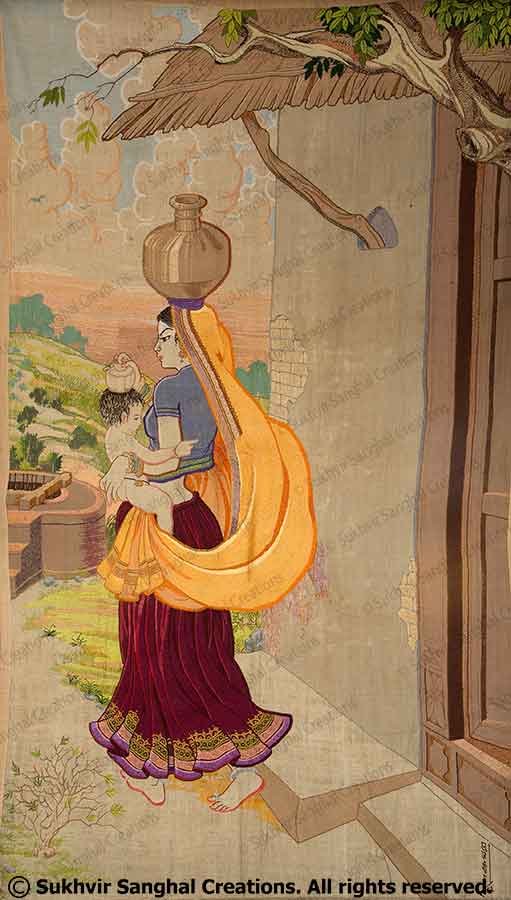
Tapestry work in India acquired a completely new dimension under his hands. It was executed on Khadi (cloth) with traditional Indian stitches. Figure composition, landscape and portraiture with full tonal values was brought into focus for the first time.
Prof. Sanghal also evolved and improved a durable process of lacsit painting on wood and ivory with water color or tempra colors.

He also evolved an original formula for the correct reading and interpretation of various ‘mudras’
He has evolved five broad ideals like the Zero, Sun, Swan, Lotus and Vatavraksha to enhance the aesthetical and technical appeal of his art and to lay stress on the moksha(salvation) aspect in painting. On the other hand, most of the schools of painting have been dealing only with Dharma (righteousness), Artha (wealth) and Kama (desire).

- Prof. Sukhvir Sanghal